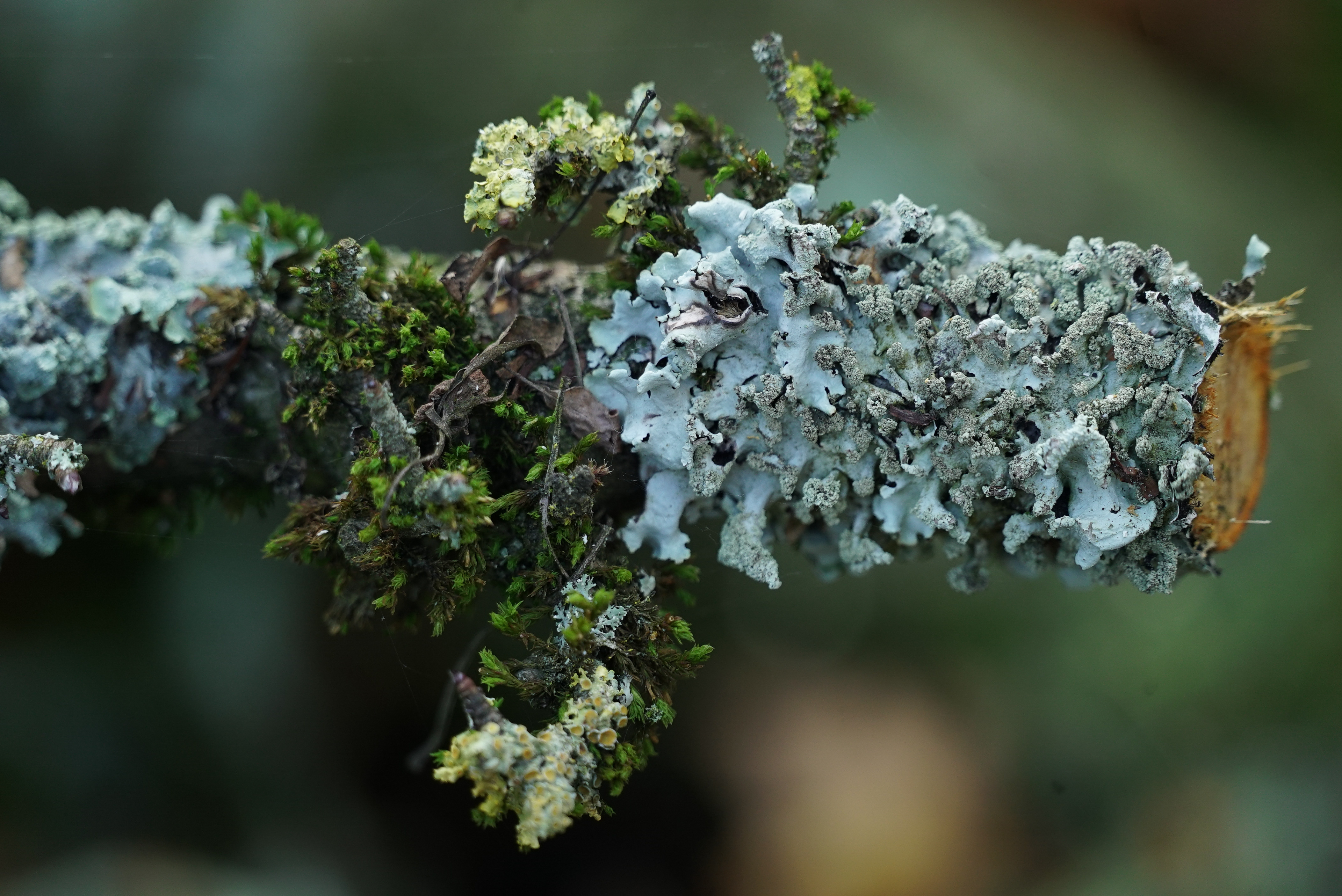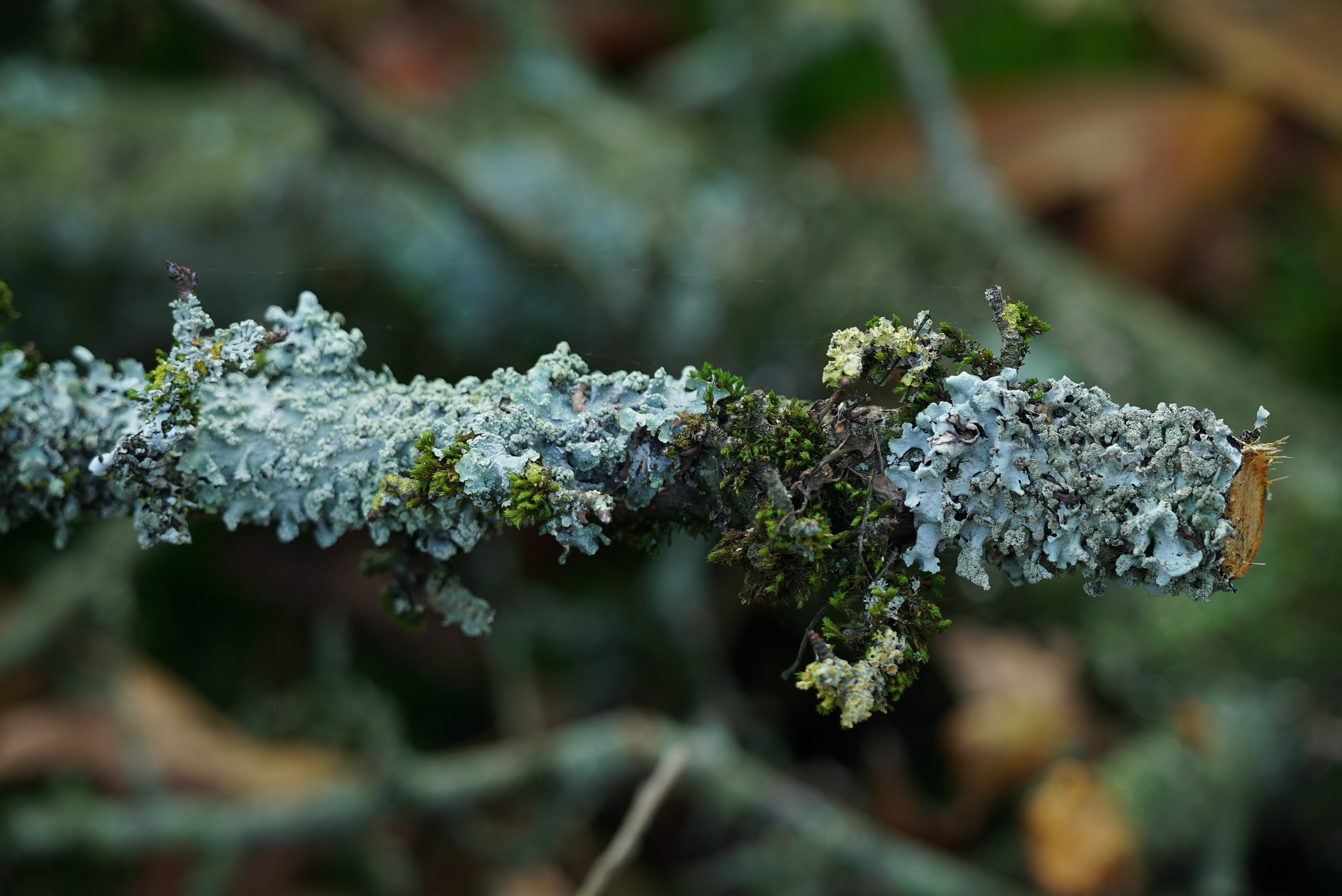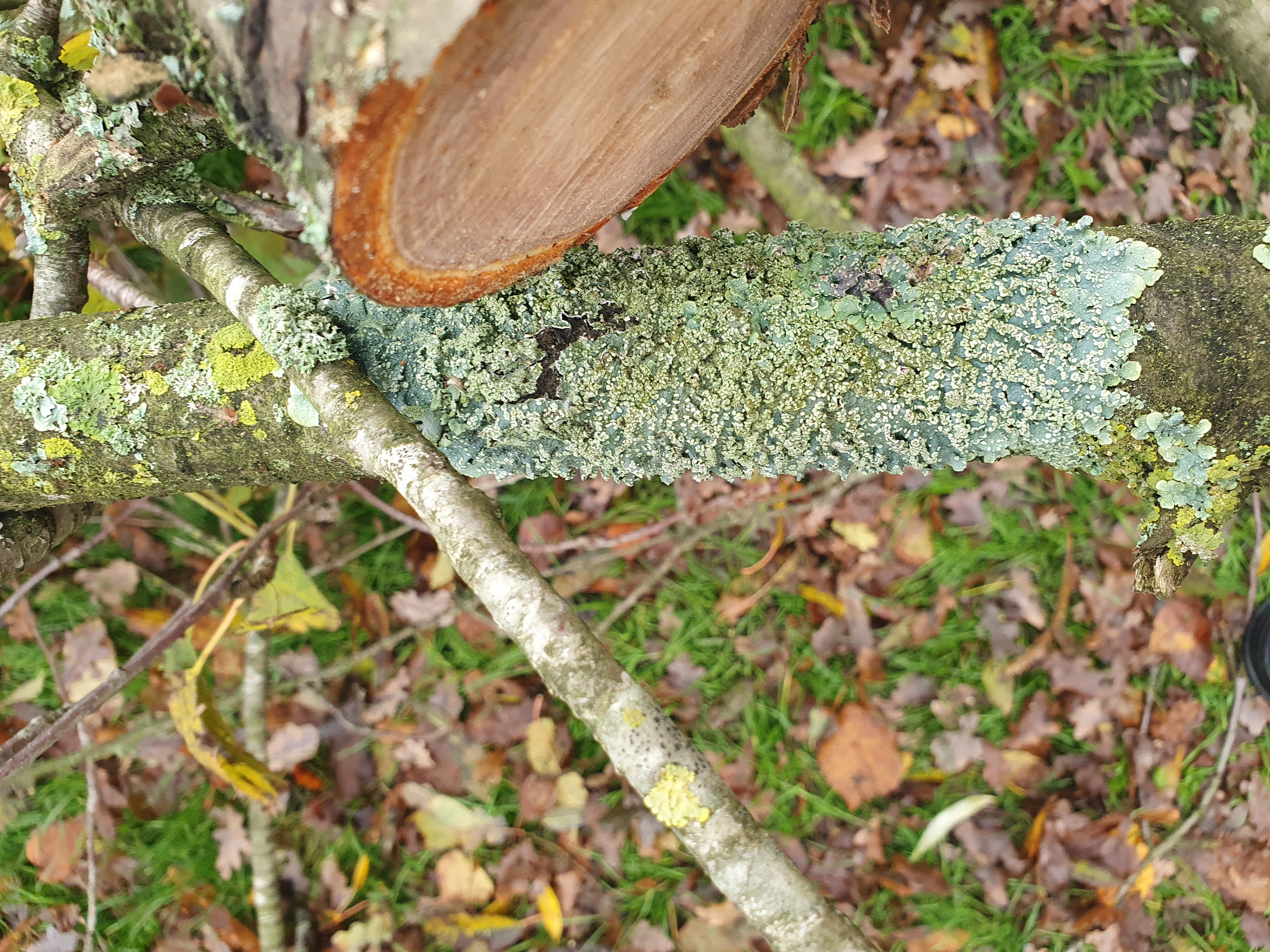The autumn of 2023 often made me pace back and forth around Flevopark, at the easternmost end of "mainland" Amsterdam.
The municipality of Amsterdam is ever watchful and highly suspicious of excessive and unpredictable growth, at least when trees are concerned. And so, while the city keeps expanding in all directions, the trees of Flevopark must grow their branches in an acceptable direction or else face the saw.
That's how I came about these piles of branches and twigs all across the park, which I'll admit, didn't draw my attention such as they were but rather for what they carried.
The lichen and moss that grew on these fallen boughs were left undisturbed for years, perhaps decades, unperturbed and unseen. And now, on top of an uninspired pile on uninspiring grass, they lay right in front of me.
So what do we know about lichen?
Lichen aren't a plant or a fungus right? They're both. Wrong! That used to be the neat story about poor alga kidnapped by a cackling fungus, or the perfect marriage of asymmetric yet complementary partners. The truthier version is a bit more complex.
No two lichen house the exact same species. They can and do include yeasts and bacteria of various kinds, whose role in the collective isn't as clear as one might expect or like it to be.
And so a better image might be a community of strangers, working and growing together until it's impossible for a human eye to tell them apart, or for a microscopic lens to neatly analyse, catalogue, and classify each member. But you can't take a portrait of a whole community, or at least that's not a very common practice. Just try to picture a community in your head - I'd wager it's a collection of images, either moving or still. What's more commonly collected in one frame is a family, whatever that family may be.
What particularly fascinates me about these guys is is their shape; we're perhaps used to crustose (crusty) and foliose (leafy) lichen stretching out in a sort an expanding formless circle, like a tree that forgot where gravity is. But these communes didn't land on a wall or a trunk or a rock, but a high protruding branch. Lichen don't take their substrate for an empty space to be molded by their desire for growth.
Like water, like patina, or maybe like a thought, they are shaped by their environment, which is in turn shaped back by them until, like lichen themself, it cannot be put apart and understood as singular. A lichen is never just lichen. And you're never alone when you're lichen.
And one more thing: lichen exist in context. The most background of creatures has a background. So why would I surround by white emptiness? Brains have an annoying tendency of blocking out the ambient, the still, and the slow. Yet paying attention to such things is a practice which is its own reward. Sometimes all it takes is to look at something closely, and in an unexpected space, to make it pop. Take a couple of minutes to look at these marvelous creatures. Then maybe go outside and find lichen on the nearest tree. It may just so happen that they'll grow more and more present for you, just as they did for me.






